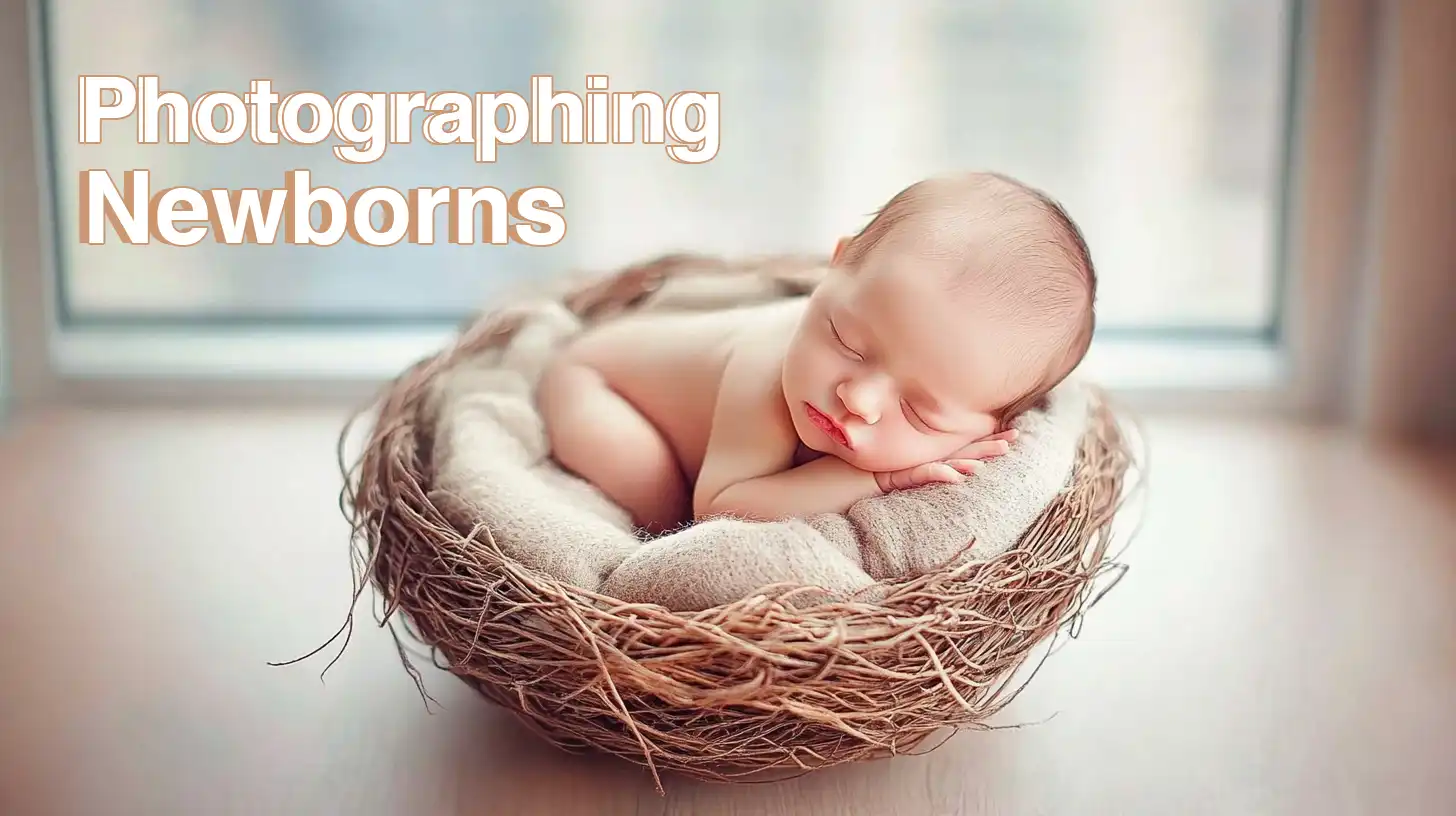
Photographing newborns is a magical yet challenging experience that requires patience, skill, and a touch of creativity.
In this article, I’ll guide you through the important tips and techniques to enhance your newborn photography sessions.
Whether you’re a seasoned photographer looking to refine your skills or a beginner eager to dive into this rewarding niche, you’ll find valuable insights to attract your interest and spark your creativity.
Discover the art of setting the perfect scene, engaging with the little ones, and capturing their innocence in the most stunning way possible.
Let’s embark on this journey together, and you’ll see how rewarding photographing newborns can truly be. Get ready to learn, experiment, and create breathtaking images that stand the test of time.
Table of Contents
Understanding Newborn Photography
Newborn photography captures the beauty and innocence of a baby’s earliest days. It focuses on creating timeless images that families can cherish forever.
What is Newborn Photography?
Newborn photography focuses on capturing the first days of a newborn’s life. In these newborn photos, a professional photographer highlights the innocence and charm of the baby’s early moments.
Emphasizing natural poses and great light is important for producing stunning portraits. Using techniques like selective focus in Photoshop can enhance the details and softness of these precious images.
Many newborn photographers capture a baby’s head from various angles to showcase unique features. During a newborn session, patience and care are important to ensure the baby remains peaceful and undisturbed.
Proper use of natural light accounts for amazing aesthetics, with soft shadows and highlights enhancing the beauty of baby photos. Unlike other types of photography, newborn photography requires unique skills and understanding of the baby’s needs.
The Importance of Photographing Newborns
Photographing newborns preserves precious memories for families. Newborn photos become cherished keepsakes that families will treasure for years.
Whether at a studio or at the baby’s home, a newborn session captures genuine interactions and expressions.
A well-executed baby photoshoot often includes elements like a favorite blanket or a special family pet for added sentimentality.
Emphasizing the baby’s safety, photographers use gentle handling techniques to pose the baby, keeping them comfortable and happy throughout the session.
Capturing the Essence of a Newborn Baby
Capturing the essence of a newborn baby involves more than just taking photos. It is about understanding the nuances of a baby’s face and translating that into timeless imagery.
A newborn photographer pays attention to details like the baby’s skin and uses wrap baby techniques to accentuate purity and freshness.
A skilled newborn photographer knows that tools like white noise can calm a fussy baby, helping ensure a smooth session. Great newborn photos rely on the photographer’s ability to catch different angles.
By focusing on a baby’s head and using macro photography shots, the newborn photographer achieves beautiful close-ups full of detail.
Balancing good light can transform simple scenes into beautiful images that reflect the baby’s spirit.
Pro Tip: During a baby photoshoot, keep the baby safe by ensuring they are comfortable and secure.
Utilize tricks like playing white noise or bringing familiar objects for reassurance.
Preparing for a Newborn Photoshoot
Getting ready for a newborn photoshoot is both exciting and a bit daunting, even for an experienced newborn photographer. The baby can’t even hold their head up, let alone sign a model release form.
But don’t worry, folks. The secret is all in the preparation and patience.
Fundamental Equipment for Newborn Photos
A skilled newborn photographer knows that the right equipment can make all the difference.
- A good camera: Whether you're a newborn photographer using high-end gear or just a reliable smartphone, make sure you have control over settings. If you're considering an upgrade, understanding the difference between digital cameras can guide your choice.
- Props: Think cute blankets, small hats, and that unmissable white onesie. Every newborn photographer loves having these essentials on hand for those timeless shots.
- Reflectors: These can help bounce around that good light, but remember, you don’t want the baby to feel like they’re under an interrogation lamp.
Choosing the Right Natural Light
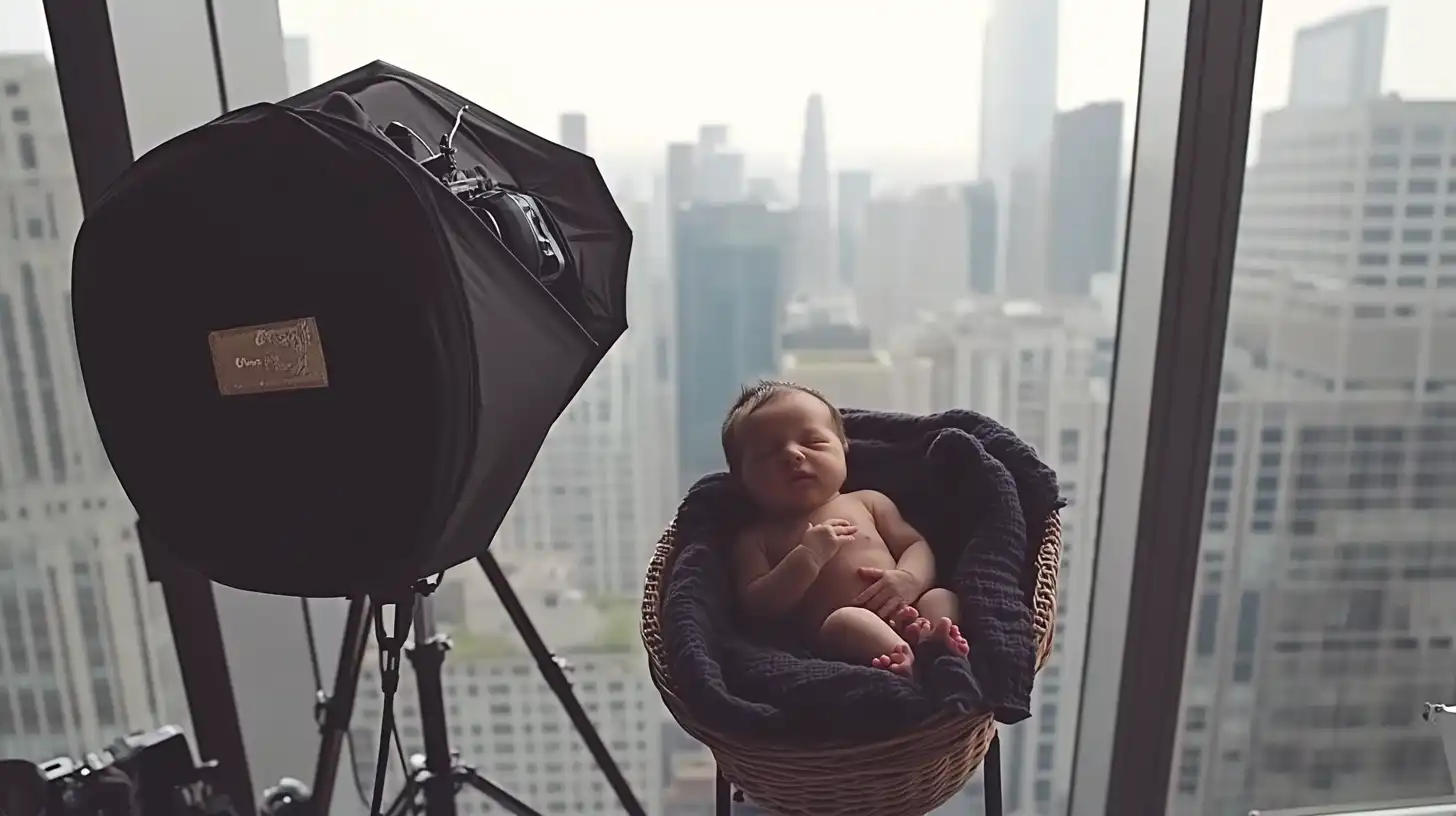
Natural light is a newborn photographer’s best friend. It’s gentle and soft and creates those dreamy highlights. Plan your photos at home during the day when your space gets the best window light.
Safety Tips
Safety is always a top priority for a newborn photographer. Taking a few simple steps can help create a calm, secure environment for the baby, ensuring a smoother session for everyone involved.
Ensuring Comfort and Safety
“Baby safe” sounds much better than “baby’s awake and protesting.” Always make sure the room is warm, and keep the baby secure and comfortable. Check your props; make sure they’re soft and safe.
Handling the Newborn Baby
Handling during newborn sessions requires gentle hands. Never force any poses. Listen to the baby’s cues. If they start fussing, take a break. It’s about creating those momentary pauses rather than rushed perfection.
Remember, taking photos of your own newborn should be a delightful experience.
Make sure they’re content before you start the session, which means well-fed, napped, and ready for the spotlight.
Pro Tip: When learning how to do newborn photography or exploring child photography, engage with your little one using soothing music to create a calm space. This approach will help you capture that great shot every time.
Posing Techniques for Newborns
Engaging in baby photography can be both a rewarding and daunting experience, not just for the budding newborn photographer but also for parents eager to capture lasting memories of their own baby.
Classic Newborn Poses
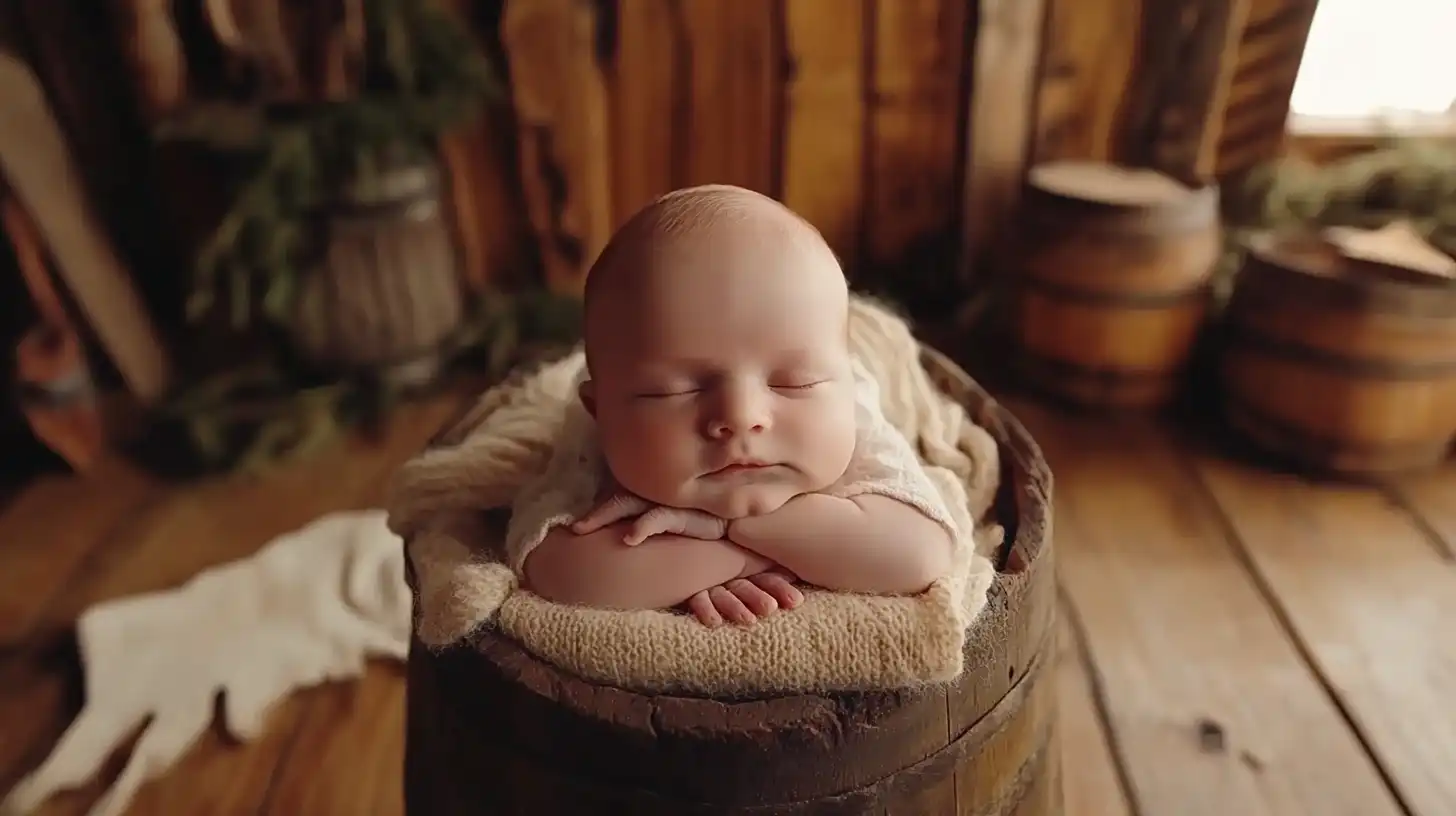
The classic poses are timeless and adored by every newborn photographer out there.
Start with the “tushie up” pose, known for its adorable charm where the baby lays face down.
Next up is the “froggy” pose that embodies the serenity and fragility we associate with newborns, something I’m passionate about.
Cradle the newborn’s head with their tiny hands and let those little knees tuck under; just ensure the baby is always supported.
Remember, safety comes first; keep a spotter nearby when practising these poses. We aim for delightful expressions but not at the cost of comfort.
Using Props in Newborn Photography
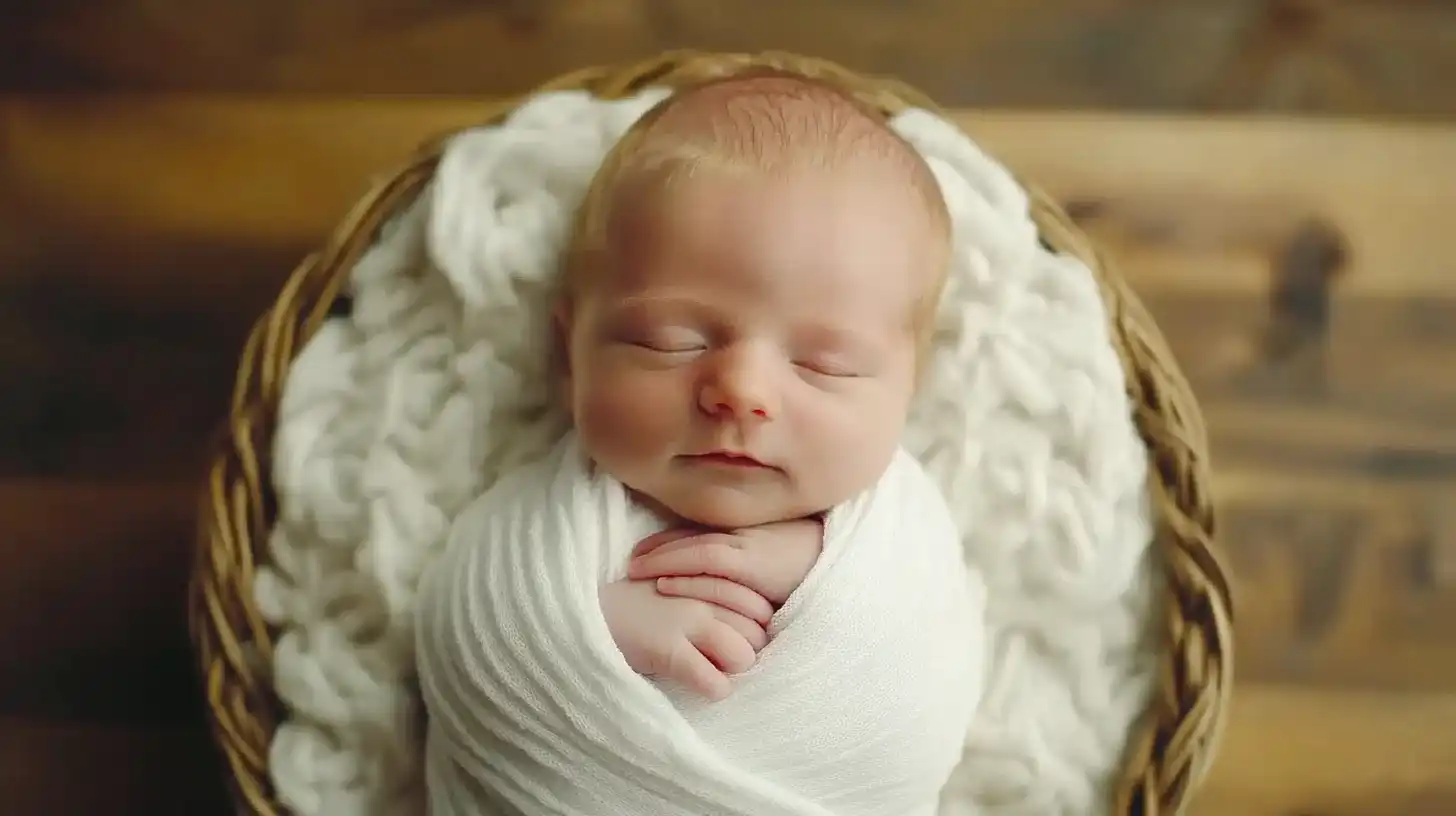
Blankets, baskets, and hats can seem mundane, yet they transform newborn photos by adding texture and context. I favor using soft fabrics to wrap the little one – they stay cozy, and the colors are a feast for the eyes.
Props can guide the mood of the photoshoot, turning it playful or serene. A simple basket is not just a prop; it becomes an intimate cradle highlighting the baby’s size.
Creative Posing Ideas for Newborn Photos
When routine fails me, creativity saves the day. Portrait mode plays a role here, blurring out distractions as I focus solely on capturing that genuine interaction between a baby and parents.
Every newborn photographer should experiment with angles – shoot from above, lie on the ground, or even stand on a stool.
Explore placing the newborn inside oversized clothes to highlight their tiny stature. And don’t forget those close-ups, the curl of a hand or the wink of an eye, they tell stories.
Pro Tip: When editing, focus on enhancing textures using Photoshop or Lightroom to highlight the softness of the newborn’s skin. Never let lighting defeat you; aim for natural, good light which always makes the baby happy.
For those eager to learn Photoshop and Lightroom, try using props, poses, and a creative touch. Check out our other blog post for more tips, and start capturing memories that will last a lifetime.
Post-Processing Newborn Photos
Post-processing newborn photos allows photographers to enhance the natural beauty of each moment. A few thoughtful edits can bring out the softness and warmth in these precious images.
Editing Tips for Newborn Photography
As a journalist exploring baby photography post-processing, I’ve found the essence lies in mastering the basics:
- Adjusting contrast and brightness improves the glow of those tiny features.
- Aim for soft tones while maintaining skin textures.
- Use the smoothing tool sparingly to avoid creating porcelain doll-like images.
Using Lightroom? Start with presets to save time. Sure, there’s a temptation to tweak endlessly, but limit your time to focus on the bigger picture.
For those who want to take it a step further, learning Lightroom shortcuts can significantly speed up your workflow.
Enhancing Daylight Lighting in Photos
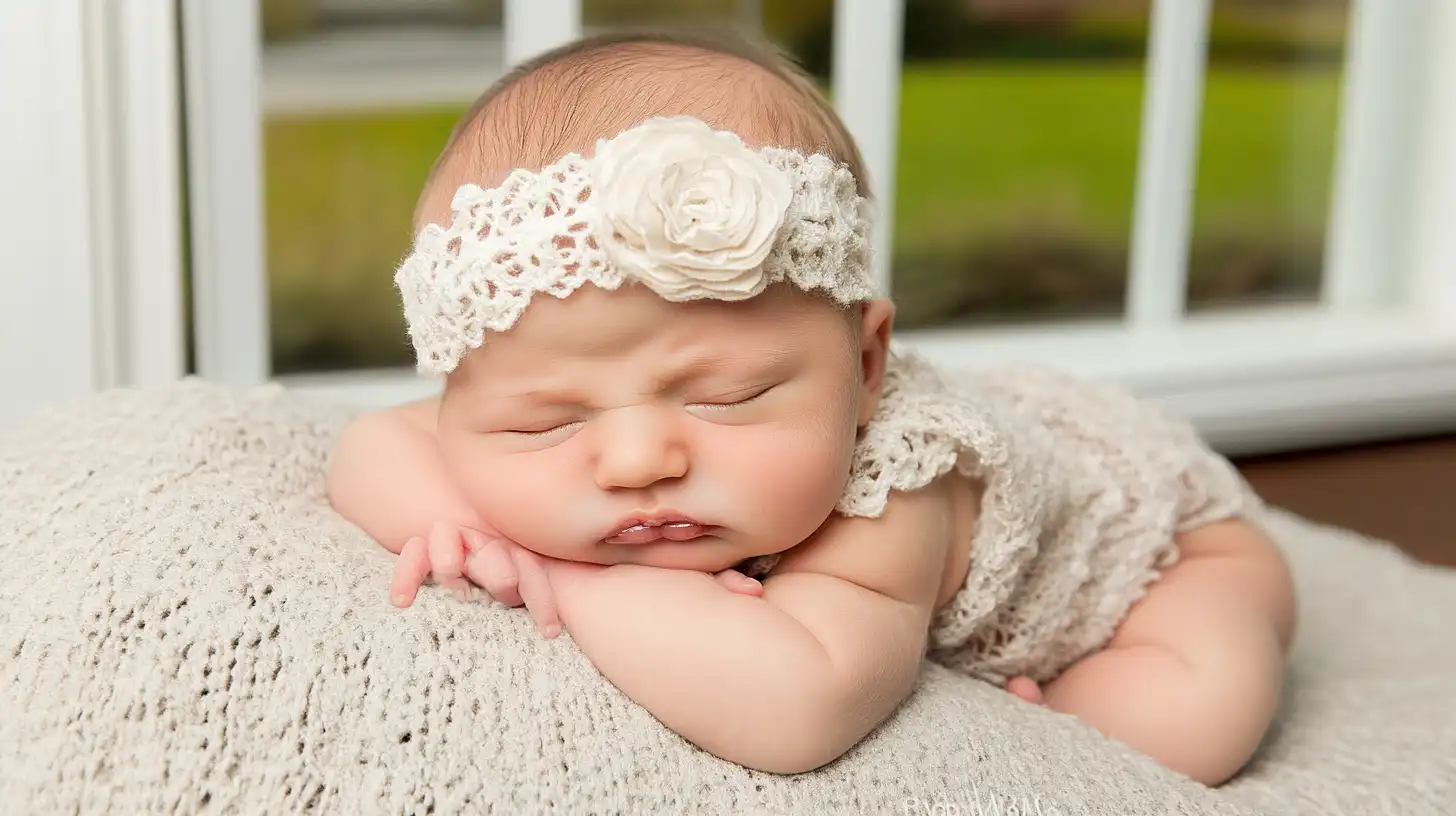
Outdoor light is your best friend. When editing, I often enhance available light rather than creating artificial effects. This keeps newborn photos looking authentic. Slightly boost the shadows for a powerful effect.
Apart from the edits, while shooting, make note of differing times of day:
- Morning light is warm, giving a lovely hue to your shots.
Pro Tip: When editing, explore different portrait ideas for photography to bring out the best in your newborn photos.
Enhancing natural light and using subtle adjustments can help you capture the warmth and softness that make these moments truly special.
Tips for Successful Newborn Photography
From working closely with parents to building a strong portfolio, successful newborn photography combines technique, patience, and thoughtful planning. The following table provides an overview of key aspects to consider for a smooth, memorable session.
| Aspect | Overview |
|---|---|
| Working with Parents and Newborns | Engage parents with comforting words, discuss preferences, and guide them gently for a stress-free session. |
| Building a Portfolio | Prioritize quality over quantity, use themes, and maintain a recognizable style through consistent editing. |
| Online Presence | Create a visually appealing website, engage on social media, and balance showcasing work with audience interaction. |
| Marketing Your Business | Identify your target audience, leverage social media, word-of-mouth, and newsletters to keep your business top of mind. |
| Editing and Post-Processing | Use personalized presets in Lightroom for consistency, and employ subtle edits to enhance natural beauty. |
Working with Parents and Newborns
Being a newborn photographer requires patience and understanding. The stars of the shoot are not just the little ones but their parents, too. Setting the mood involves:
- Using comforting words and encouragement.
- Discussing preferences like colors and props.
- Engaging with parents pre-shoot for smooth sailing.
- Gently guiding them through each step.
- Keeping parents involved yet stress-free.
Remember, babies have their own timing; they don’t follow our clocks. Flexibility is important. If a favorite blanket calms the baby, incorporate it into the shoot. Creating an environment as cozy as a grandparent’s hug encourages cooperation.
Building a Portfolio
Start small but strong. Here are some tips:
- Prioritize quality over quantity.
- Include varying themes like black and white or soft pastels.
- Focus on creativity and style.
Online presence is important:
- Create a visually appealing website.
- Use social media platforms wisely.
- Balance showcasing your work and engaging with your audience.
- Maintain consistency to cultivate a recognizable style.
Building a portfolio takes time, effort, and sometimes coffee breaks.
Marketing Your Newborn Photography Business
Marketing can seem complex, but breaking it down helps:
- Identify your target audience to determine marketing strategies.
- Utilize word-of-mouth as a potent approach.
- Leverage social media by sharing behind-the-scenes moments and videos of adorable mishaps.
- Engage with your audience rather than merely posting.
- Use emails and monthly newsletters to keep your business fresh in mind.
Pro Tip: For those seeking tips for studio photography or curious about how to do fashion photography, creating personalized presets in Lightroom can save time and maintain a consistent look across your photos.
This approach works well for newborn sessions, keeping your style cohesive and polished.
Creating a Cohesive Newborn Gallery
A successful gallery speaks to harmony. Stick to consistent color schemes or similar editing styles. If you’re a busy newborn photographer juggling multiple styles, consider templates. They’re lifesavers.
Your collection should tell a story. But remember, simplicity doesn’t mean monotony. Spice it up with varying focus levels or composition.
Frequently Asked Questions (FAQs)

What settings should I use for newborn photography?
- Aperture: Use a wide aperture (f/1.8-f/4) to keep the focus on your little subject and blur out the background.
- Shutter Speed: Aim for a faster shutter speed (1/200 or faster) to capture quick movements without blur.
- ISO: Keep the ISO as low as possible to avoid noise; adjust only if needed based on lighting conditions.
- White Balance: Adjust according to the lighting situation to keep skin tones natural, or set it to auto for simplicity.
How do photographers take newborn photos?
- Preparation: Ensure the room is warm and comfy for the newborn, with soothing background sounds or music.
- Posing: Use safe, soft props to gently pose the baby in natural, comfortable positions. Always prioritize the baby's safety.
- Timing: It is best to shoot during a time when the baby is most likely to be sleepy and calm, typically after feeding.
- Assistance: Having a helper or parent nearby to soothe and adjust the baby as needed is very helpful.
How long after birth can you take newborn pictures?
- First 2 Weeks: The ideal time is within the first 5 to 10 days after birth when babies are sleepier and curl up naturally.
- Flexibility: If missed, photographs can still be taken up to four weeks after birth with slightly different poses.
Is it safe to take pictures of a newborn?
- Safety First: Always ensure that the baby is supported safely during the shoot, avoiding any risky poses.
- Hygiene: Disinfect all props and equipment before use, and ensure anyone handling the baby has clean hands.
- Environment: Keep the environment warm and avoid direct flash to protect the baby's eyes.

Conclusion
Photographing newborns has truly enriched my journey in photography, teaching me patience and the value of a calm, comfortable atmosphere for babies and their families. This art form lets us capture life’s delicate beginnings in a way that feels both genuine and timeless.
For those looking to refine their skills, tools like Photoshop and Lightroom have been game-changers. They help me bring out the natural beauty in each moment without losing the essence of these fleeting times.
My Photoshop Course offers detailed techniques for refining images, and my Lightroom Course shows efficient editing workflows that save time while achieving stunning results.
If you’re interested in starting with these tools, you can learn more about Photoshop and Lightroom directly from Adobe.
Photographing newborns has taught me so much about the essence of life and the delicate nature of beginnings. It’s a privilege to be part of these intimate moments, and I encourage anyone with a passion for photography to explore this rewarding niche.
Read more about Photoshop:













